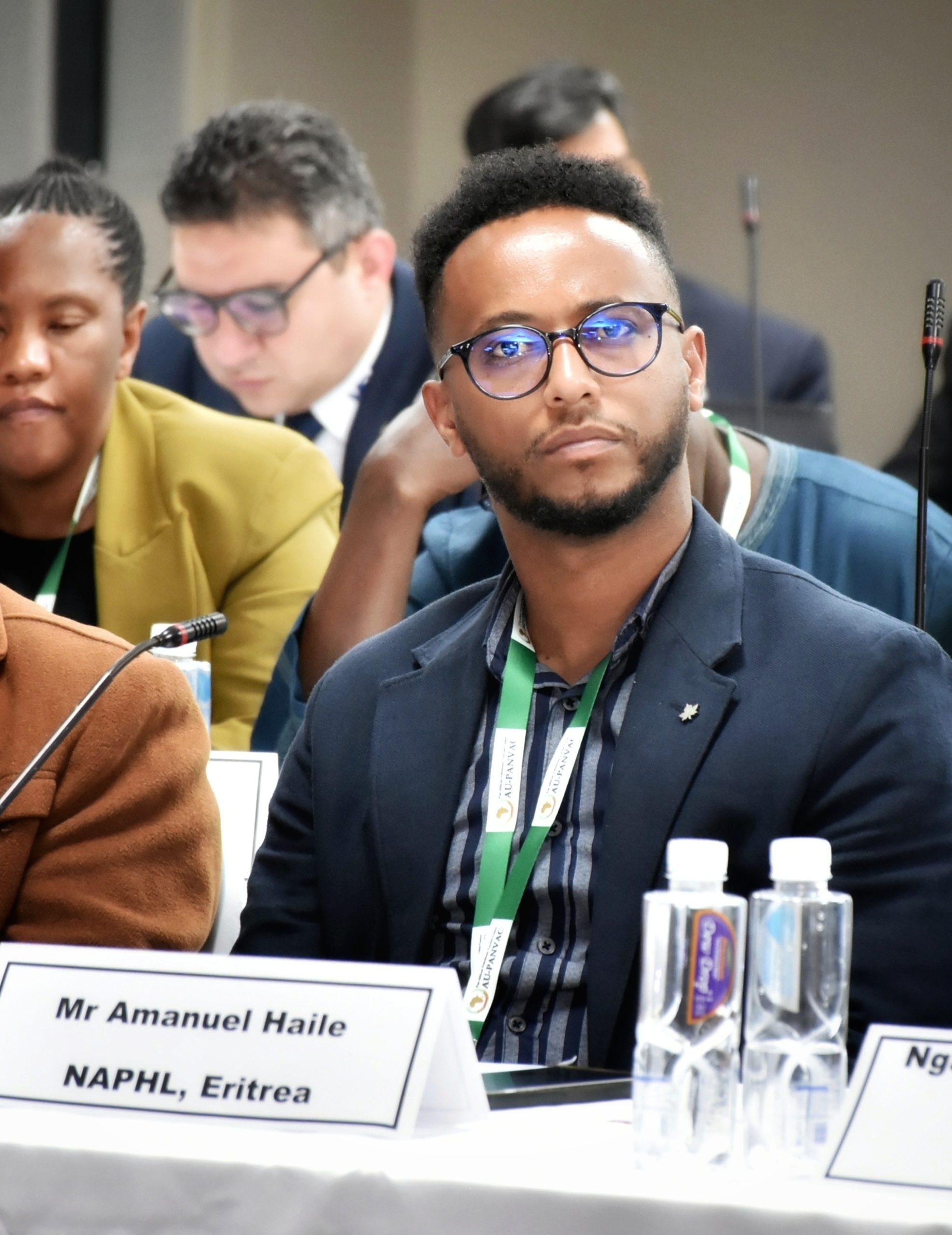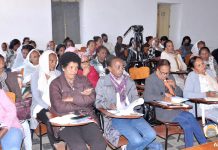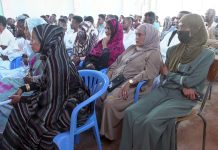Africa-Press – Eritrea. Q: To begin with, could you please introduce yourself to our readers?
A: My name is Amanuel Mebrahtu, and I currently serve as the Head of Vaccine Production and Quality Control at the National Animal and Plant Health Laboratory (NAPHL) of the Ministry of Agriculture (MoA).
Q: Let’s delve into the historical background—how did animal vaccine production begin in Eritrea?
A: Animal vaccine production in Eritrea dates back to 1903, during the period of Italian colonization. At that time, the country produced up to ten different bacterial and viral vaccines, marking the early foundation of veterinary biological production in Africa. However, during the subsequent Ethiopian administration, this progress significantly deteriorated. Following Eritrea’s independence, efforts to rehabilitate and revitalize the sector began gradually, with consistent support from the government. These efforts have continued over the years, leading to notable advancements in vaccine production capacity and infrastructure.
Q: What types of animal vaccines were being produced in those earlier years?
A: In the early years, a range of both bacterial and viral animal vaccines were produced. These included vaccines for anthrax, contagious caprine pleuropneumonia (CCPP), fowl pox, fowl septicemia, rabies, and snake antivenom, among others. These efforts marked significant progress in the prevention and control of infectious diseases in livestock and other animals.
Q: Since Eritrea’s independence, what efforts has the Ministry of Agriculture made to revive animal vaccine production?
A: Since Eritrea’s independence, the Ministry of Agriculture has played a pivotal role in reviving animal vaccine production. As part of the government’s broader efforts, the Ministry undertook key initiatives such as rehabilitating infrastructure, building the capacity of staff members, and procuring essential equipment and materials. These actions demonstrate a strong commitment to restoring and advancing the country’s veterinary vaccine production capabilities.
Q: How has the National Animal and Plant Health Laboratory (NAPHL) managed to produce these vaccines?
A: The successful production of vaccines by the National Animal and Plant Health Laboratory (NAPHL) has been made possible through the consistent and full support of the Government of Eritrea. Additionally, the dedication and hard work of NAPHL staff—ranging from top management to the vaccine production team—have played a crucial role. Their collective commitment, professionalism, and strong determination to achieve excellence have been key factors in reaching this important milestone.
Q: What is the main rationale behind producing these vaccines locally?
A: The primary rationale behind producing vaccines locally is to reduce reliance on imports, thereby saving valuable foreign currency. Local production also allows for the development of vaccines that are specifically tailored to the strains of diseases prevalent within our country, enhancing their effectiveness. Furthermore, the process of producing vaccines domestically contributes to the professional growth of staff members, enabling us to build expertise and gradually reach levels of competence comparable to international standards.
Q: Can you describe the current structure of the vaccine production body within NAPHL?
A: The vaccine production structure currently operates under the National Animal and Plant Health Laboratory (NAPHL) and is organized into four main units: Avian Vaccine Production, Ruminant Vaccine Production, Quality Control, and the Laboratory Animal Management Unit. This structured approach ensures efficiency, specialization, and adherence to high standards in the vaccine production process.
Q: What is the laboratory’s current production capacity?
A: The laboratory’s current production capacity stands at approximately 4 million doses of Newcastle Disease vaccine annually and around 1 million doses of Peste des Petits Ruminants (PPR) vaccine. In addition, the laboratory is in the trial phase for the development of new vaccines, marking a significant step toward expanding its production portfolio.
Q: Mr. Amanuel, you recently participated in the 13th Pan-African Meeting of Directors of Veterinary Vaccine Manufacturing Facilities held in Tanzania. What was the main objective of this meeting?
A: The main objective of the 13th Pan-African Meeting of Directors of Veterinary Vaccine Manufacturing Facilities was to promote harmonization among vaccine-producing countries across Africa. The meeting aimed to facilitate mutual support, knowledge sharing, and coordinated efforts in vaccine production, ultimately working toward a unified vision for veterinary health across the continent.
Q: How did Eritrea engage in the discussions or outcomes of the meeting?
A: In the 2023 meeting held in Nigeria, Eritrea participated as an invited guest. However, this year, due to significant progress in vaccine production and the positive outcomes achieved, which were presented during the meeting, Eritrea was officially recognized as the 13th vaccine-producing country in Africa. As a result, Eritrea was granted a permanent seat in the forum—an important milestone and a reflection of the country’s growing role in regional veterinary vaccine development.
Q: What are the key short- and long-term plans of NAPHL regarding animal vaccine production?
A: The key short-term plan of the National Animal and Plant Health Laboratory (NAPHL) is to meet the growing demand of local farmers by producing a range of vaccines—both those already in production and others currently in the pipeline. In the long term, NAPHL aims to advance its capabilities by initiating the production of recombinant vaccines that are internationally recognized and competitive. This strategic direction reflects the laboratory’s commitment to enhancing animal health and aligning with global standards in vaccine development
Q: Finally, I give you an opportunity to share something not mentioned above?
A: I believe we have covered most of the key topics in the previous questions. However, I would like to highlight an important point: the entire vaccine production team at NAPHL is composed of young professionals between the ages of 20 and 35. This is a promising and encouraging development for our country, as it reflects the potential and dedication of our youth. Moving forward, we continue to rely on the consistent support of our people, our government, and our ministry to sustain and expand these achievements. Thank you.
Public Relations Division
Ministry of Agriculture
For More News And Analysis About Eritrea Follow Africa-Press







